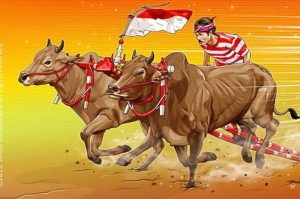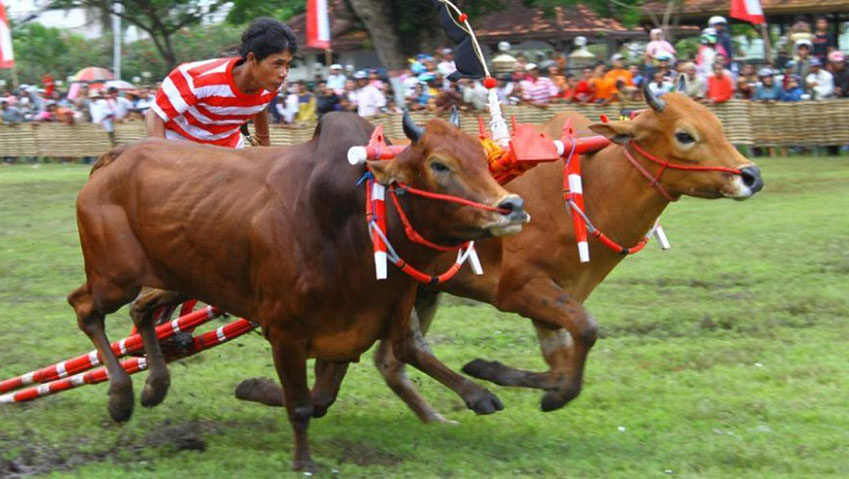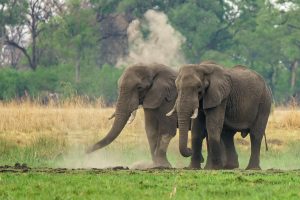Karapan Sapi is one of the most famous cultural traditions on Madura Island, East Java. This festival has become a symbol of pride for the Madurese people and attracts the attention of tourists from within and outside the country. In this article, we will explore the history, traditions, and uniqueness of the Karapan Sapi Festival.

History of the Cow Race
Karapan Sapi comes from the word “kerap” which in Madurese means running fast. This tradition is thought to have existed since the 14th century, when the Madura region was still under the influence of the Majapahit Kingdom. Initially, the cow race was part of the religious rituals and social activities of the Madurese community, which was carried out to honor the gods and as an expression of gratitude after the harvest period.
Over time, Karapan Sapi developed into an inter-village competition event. Every village in Madura usually has cows that are specially trained to take part in this competition. Victory in Karapan Sapi is not only about the speed of the cow, but also about the pride of the village and the honor of the cow owner’s family.
Traditions and Preparation
Karapan Sapi is usually held every year, especially from August to October, which coincides with the dry season. Preparations for this festival start well before the event. The cows that will compete are chosen very carefully, because not all cows have the ability to run fast. Selected cattle usually receive special care, including careful diet, regular exercise, and other special treatments.
Apart from that, cattle owners also often use various traditional methods to increase the strength and speed of their cattle. For example, the cows are given herbal medicine or herbal concoction which is believed to increase stamina and strength.

Implementation of the Cow Race
On the day of the event, two cows will be mounted in a light wooden cart called “kaleles”. These cows are then encouraged to run 100-200 meters on a prepared track. Each cow is controlled by a jockey, who usually sits on the kaleles and holds the reins of the cow. Jockeys must be very skilled, because they must be able to direct the cows to run as straight and as fast as possible.
The atmosphere in the racing arena was very lively. Cheers from the audience, traditional Madurese music, and colorful decorations on the cow’s body add to the excitement of this festival. Spectators come from various corners, both from Madura itself and from outside the region, to witness the excitement of Karapan Sapi.
The Meaning of Culture and Sustainability
Karapan Sapi is not just a competition event, but also reflects the cultural values of the Madurese people, such as the spirit of competition, hard work and togetherness. This festival is also a medium for strengthening relations between village residents and preserving traditions that have been going on for generations.
However, in the midst of modernization, Karapan Sapi also faces various challenges, such as animal welfare issues and changes in the lifestyle of the Madurese people. Even so, efforts to preserve Karapan Sapi continue to be made by various parties, including the regional government and local communities. They try to keep this tradition alive and relevant to current developments, without eliminating the local wisdom values contained in it.
